How To Configure Your Browser For Unicode
Note: Things have changed a lot since this page was introduced, and to the better. |
Contents
When you use a Browser to send something to a server, presumably all Browsers in the Western world use "Western something" as the default encoding. To take advantage of Unicode and enable others to see any APL code you might embed in your posting, you must configure your Browser correctly, otherwise it won't work.
For how to configure e-mail clients and news reader see ConfiguringMailAndNewsReaders.
To enforce your Browser to display a particular site or a particular part of a site in a particular font, see ConfigureYourBrowserForAPL
For a general article about Unicode and encoding see UnicodeForAplers.
Google Chrome
Screenshots are taken from version 1.0
Step 1
On the "Tools" menu, select "Options":
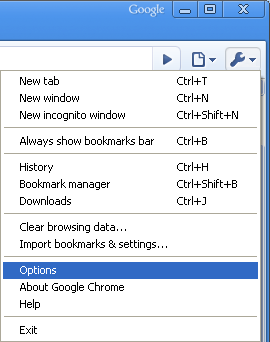
Step 2
On the "Minor Tweaks" tab, click "Change font and language settings":
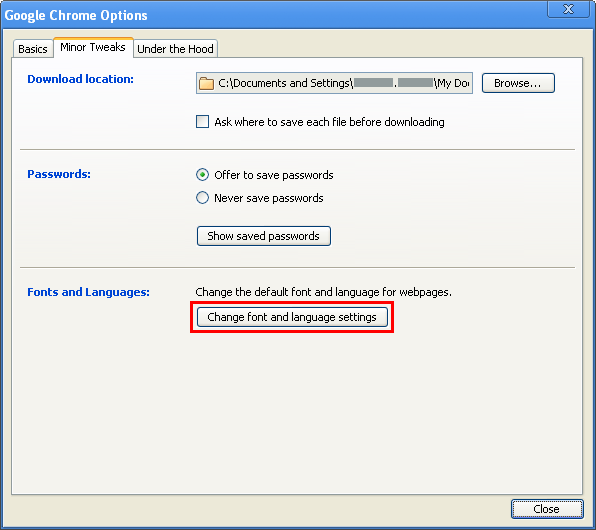
Step 3
On the "Fonts and Languages" dialog, change the following:
- Set "Fixed-width Font" to "APL385 Unicode"
- Set "Default Encoding" to "Unicode (UTF-8)"
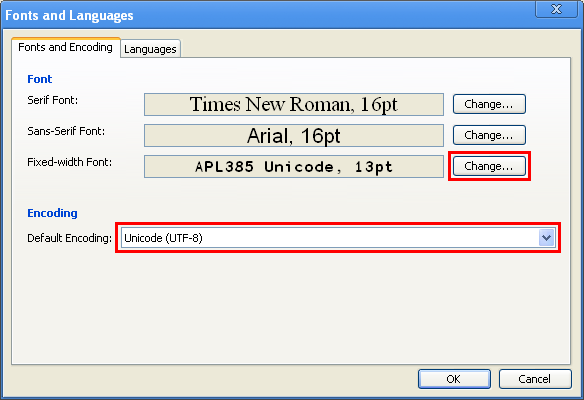
Firefox
The screenshots are taken from version 3.0.5
Step 1
Choose the "Options" command from the "Tools" menu:
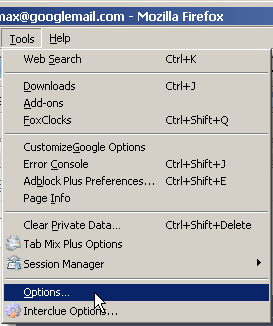
Note that the actual "Tools" on your machine might look differently due to the add-ons you have installed, if any.
Step 2
On the following dialog box select the "Content" tab:
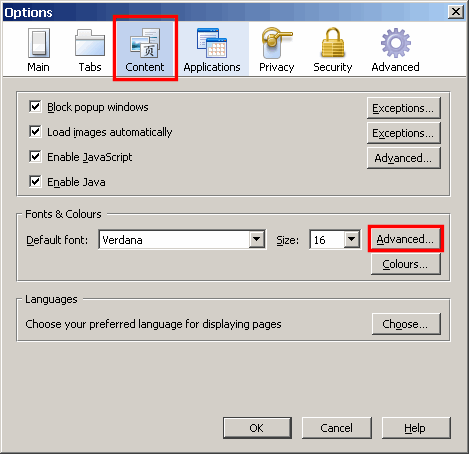
Then select the "Advanced" button.
Step 3
On this dialog box:
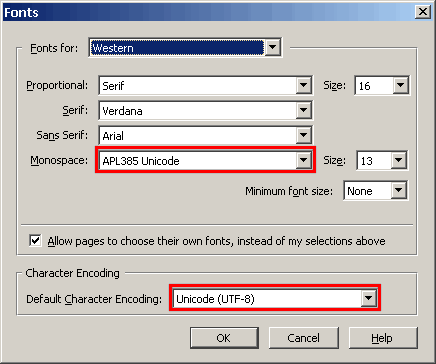
make sure that you define "Unicode (UTF-8)" as the "Default Character Encoding".
To make any APL characters look nice, select an appropriate APL Unicode font as "Monospace" font.
You might also want to change the size parameter - the APL385 Unicode font, for example, does not like nice in all sizes available.
That's it, you are done.
Internet Explorer
Step 1
From the "View" menu, select the "Encoding" command and then from the sub-menu "Unicode (UTF-8)":
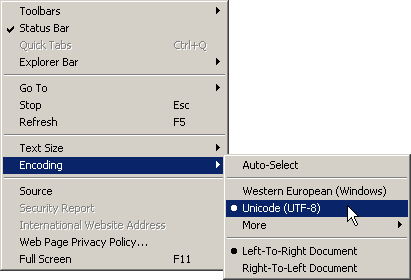
Step 2
To make any APL characters look nice, select an appropriate APL Unicode font. For this, select from the "Tools" menu the "Internet Options" command:
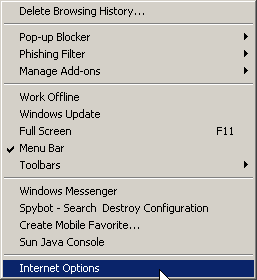
Step 3
On the dialog box select "Fonts":
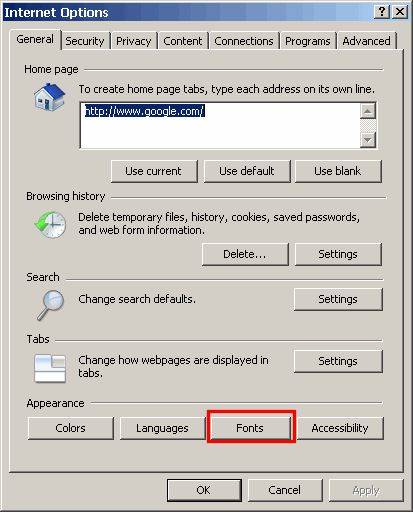
Step 4
Make sure that you define an appropriate Unicode APL font as "Plain Text Font":
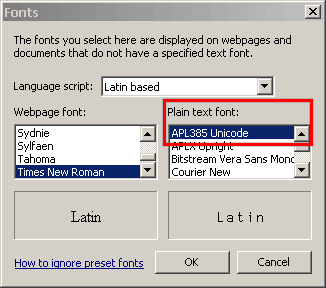
Unfortunately you cannot specify a size for any fonts in Internet Explorer.
Screenshots are taken from version 7.0
Mozilla
The screenshots are taken from version 1.7
Step 1
To specify the encoding, select the "View" menu the "Character Encoding" command:
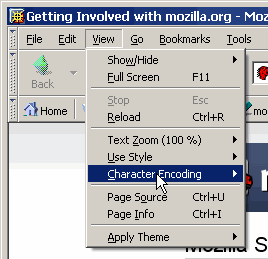
and then from the sub-menu "Unicode (UTF-8)":

Step 2
To make APL chars looking good, select from the "Edit" menu the "Preferences" command:
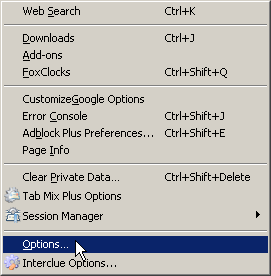
First select "Fonts" in the tree on the right of the dialog. Then specify an appropriate Unicode APL font as "Monospace" font:
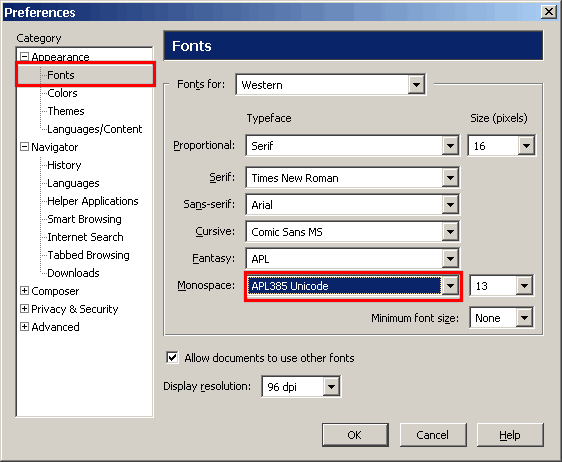
You might also want to change the size parameter - the APL385 Unicode font, for example, does not like nice in all sizes available.
That's it, you are done.
Opera
Step 1
Specify the proper encoding by selecting from the "View" menu the "Encoding" command and then from the sub-menu "Unicode > UTF-8"
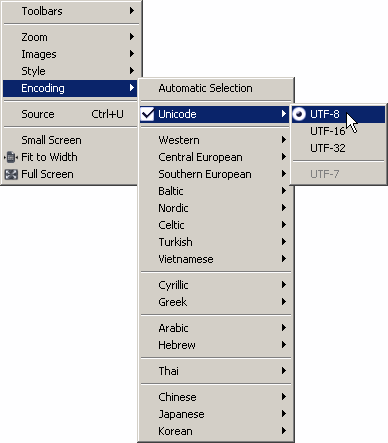
Step 2
To specify an appropriate APL Unicode font, select from the "Tools" menu the "Preferences" command:
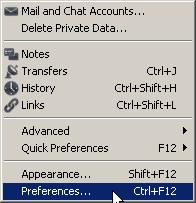
In the upcoming dialog, click on the button to the right of "Monospace font" ash shown here:
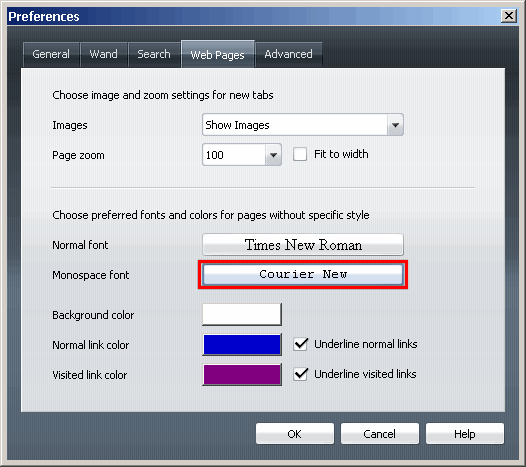
Now select an appropriate APL Unicode font as in this example:
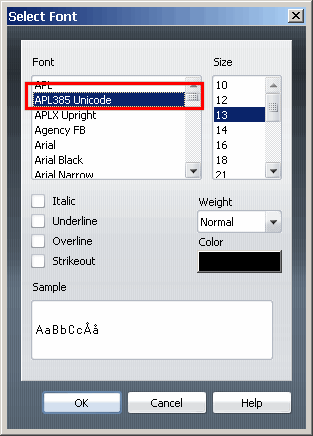
The screenshots are taken from version 9.5
Safari
Step 1
From the "Edit" menu select the "Preferences" command:
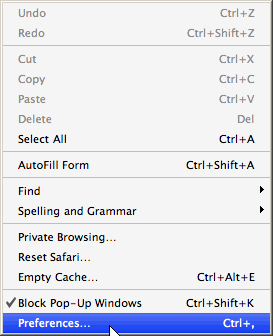
Step 2
In this dialog you can specify both, the appropriate encoding "Unicode (UTF-8)" and appropriate APL Unicode font as "Fixed-width font":
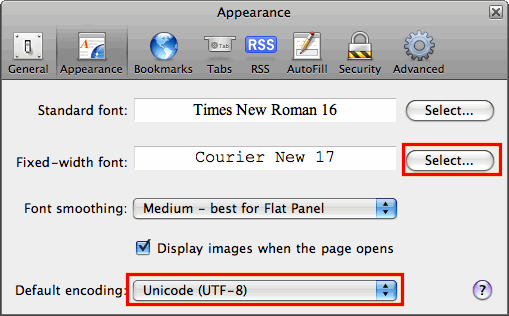
Attention!
Note that Safari offers in the "View" menu an "Text Encoding" command. This command does not work anyway if no page is displayed, but even when it works, it changes the encoding only temporary and for the current page!
The screenshots are taken from version 3.1
 APL Wiki
APL Wiki